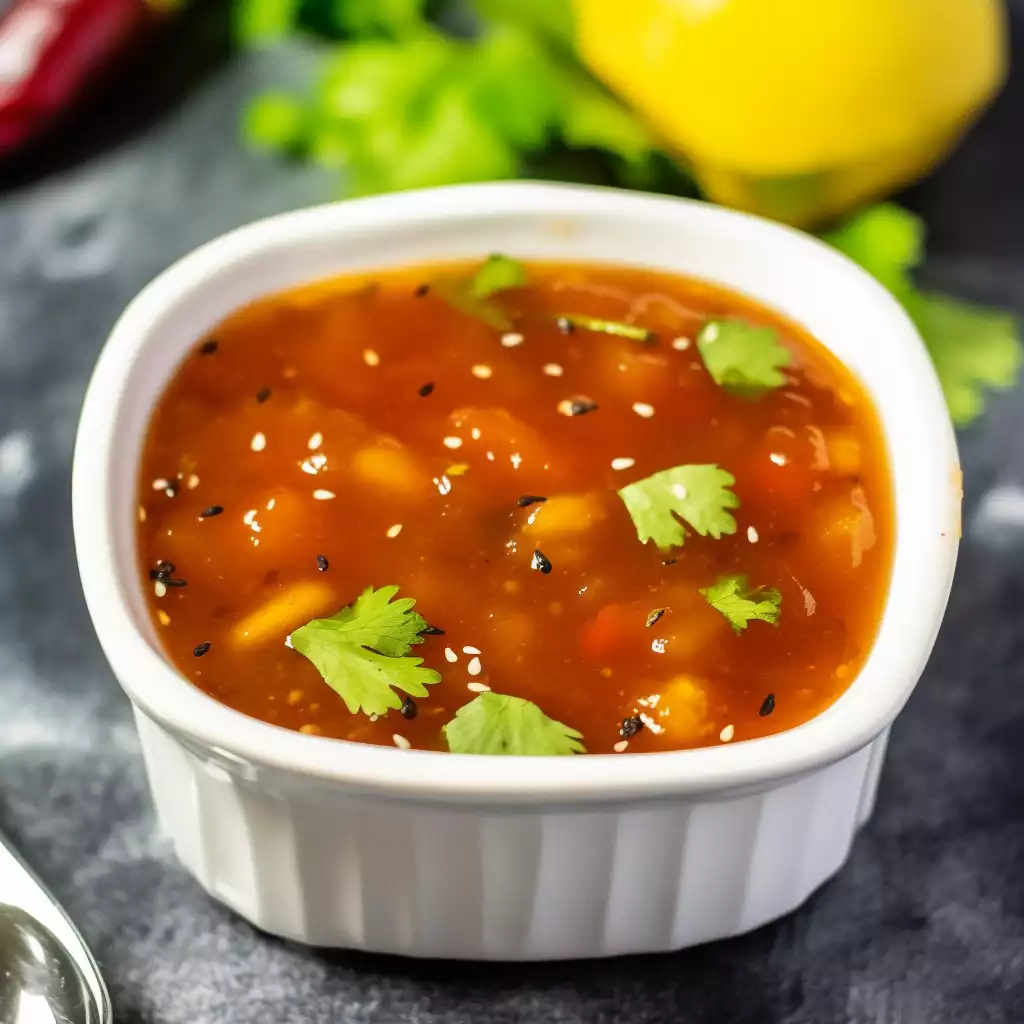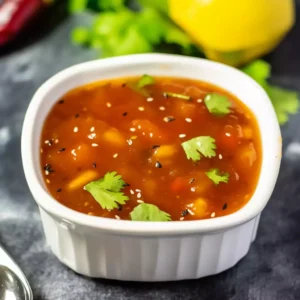
Mango chutney, a delightful condiment bursting with sweet and tangy flavors, is a versatile addition to any pantry. Originating from the Indian subcontinent, this recipe has traveled far and wide, finding its way into diverse cuisines around the globe.
While traditionally served as a side dish or accompaniment to spicy curries and savory snacks, mango chutney’s appeal extends beyond its cultural roots, elevating everything from sandwiches to cheese platters with its vibrant taste.
Despite its exotic allure, making mango chutney is surprisingly straightforward, making it an ideal project for both novice and seasoned cooks alike.
As the ingredients simmer together, filling the kitchen with irresistible aromas, you’ll witness the transformation of simple components into a harmonious symphony of flavors.
Whether you’re seeking to tantalize your taste buds or impress guests at your next gathering, mango chutney promises to be a delightful addition to your culinary repertoire.
Expert Tip: Experiment with additional spices like cardamom or fenugreek for unique flavor variations.
Ripe Mangoes: These juicy fruits form the base of the chutney, contributing their natural sweetness and vibrant color. When ripe, mangoes add a delightful tropical flavor to the dish.
Sugar: Sugar enhances the sweetness of the mangoes, creating a balanced flavor profile in the chutney.
White Vinegar: The acidity of white vinegar provides a tangy contrast to the sweetness of the mangoes, helping to balance the overall taste of the chutney.
Onion: Finely chopped onion adds a savory depth to the chutney, complementing the sweetness of the mangoes.
Garlic: Minced garlic infuses the chutney with a subtle yet distinctive flavor, enhancing its aromatic profile.
Ginger: Grated ginger lends a warm, spicy note to the chutney, adding depth and complexity to its flavor profile.
Cumin Seeds and Mustard Seeds: Dry roasted and ground into a coarse powder, these spices contribute earthy and pungent flavors, elevating the overall taste of the chutney.
Coriander Powder: Ground coriander adds a citrusy, floral aroma to the chutney, enhancing its depth of flavor.
Turmeric Powder: This golden spice not only lends a vibrant hue to the chutney but also offers earthy undertones and a subtle bitterness.
Chili Flakes: Adding a hint of heat, chili flakes provide a gentle kick to the chutney, balancing its sweetness with a touch of spice.
Salt: Salt not only enhances the flavors of the other ingredients but also helps to preserve the chutney.
Cinnamon Powder and Ground Cloves: These aromatic spices impart warm, woody notes to the chutney, adding complexity and richness to its flavor profile.
Expert Tip: Adjust the sweetness and acidity of the chutney to suit your taste preferences by varying the amount of sugar and vinegar.
Expert Tip: For a smoother consistency, you can blend the cooled chutney in a food processor or blender before transferring it to jars.
Mango chutney can last for up to 2-3 weeks when stored in clean, airtight jars in the refrigerator.
Yes, feel free to adjust the amount of chili flakes according to your preference for spiciness.
While white vinegar is traditional, you can experiment with other types of vinegar like apple cider vinegar for a slightly different flavor profile.
Fresh mangoes are preferred for the best flavor and texture, but you can use canned mango pulp as a substitute if fresh mangoes are not available.
Yes, you can freeze mango chutney in freezer-safe containers for up to 6 months. Thaw in the refrigerator before using.
Here are some more recipes for you to enjoy! If you my recipes don’t forget to rate and leave a comment.
If you have any recipe suggestions, please do not hesitate to ask me. A great way to stay in contact with me is through Instagram, Facebook, Twitter and YouTube. Don’t forget to tag me @CookwithNabeela in your recipe photos!

Subscribe now to receive my latest recipes directly in your inbox. Stay up-to-date and never miss out!

I love to cook! I want to share with you my favourite, delicious family-friendly recipes. I want to inspire you to create fantastic food for your family every day.
Add your first comment to this post